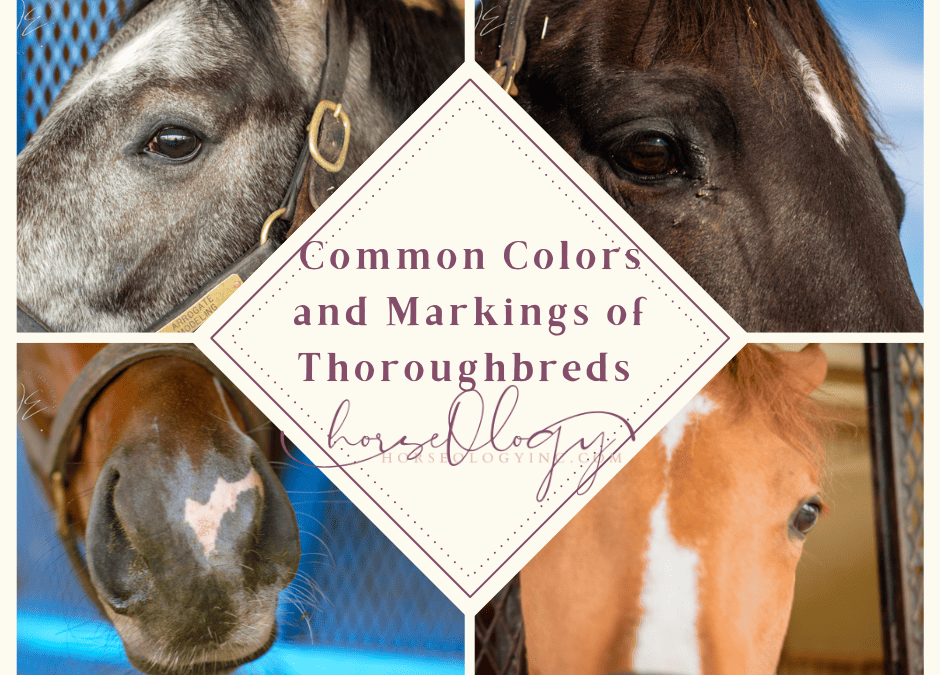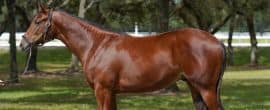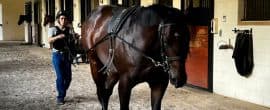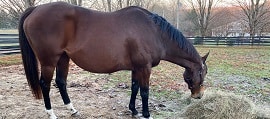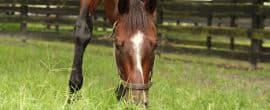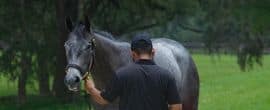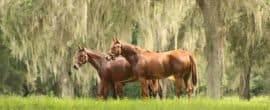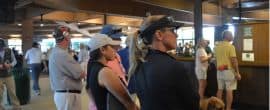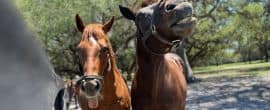One of the many reasons horseracing is popular is because people love to watch stunning horses on TV and in person. These powerful and sleek animals are beautiful on and off the track. But what makes thoroughbreds so compelling? Part of our attraction, just like to any other animal, is about coloring and markings. Here’s a closer look at the standard colors for thoroughbreds and markings.
Most Common Thoroughbred Coat Colors
Bay, chestnut, black, and grey are thoroughbreds’ most common and accepted colors. Coat colors for horses, much like cats and dogs, are a great way to differentiate the animals and provide us with visual interest but aren’t generally an indicator of performance. Here’s what to know about the most common colors.
- Bay: defined as a brown body with black point coloration of the mane, tail, ear edges, and lower legs
- Chestnut: a reddish-brown coat with mane and tail of the same color
- Black: not as common a color and often confused with a very dark bay horse
- Grey: a spectrum of colors between white and black (we’ll dive into this one more below)
Face Markings
Along with body color, horses often have different white markings on their face. There are a variety of markings, but they fall within several categories.
- Snip: small white marking on the muzzle not connected to another marking
- Stripe: narrow marking on the center of the face from the nose to between the eyes
- Star: white marking on the center of the forehead (it doesn’t have to be star-shaped to be called a star)
- Blaze: a white marking on the face thicker than a stripe
- Bald face: a white mark extending outward past the eyes and continuing down to their nose
Socks and Leg Markings
White markings also appear on their legs. Their descriptions are:
- Coronet: thin band of white just above the hoof
- Pastern: more white above the hoof but ending below the fetlock
- Sock: white marking that reaches from hoof to above the fetlock
- Half-stocking: continues up the leg halfway up the cannon bone
- Stocking: covering the entire lower leg, often above the knee or hock
What About The Gray?
So we mentioned gray horses, too. There has long been a superstition in horseracing to “always bet on gray.” Why? Because they are much rarer on the track than their chestnut and bay counterparts. And there have been a handful of great gray champions in the sport. Gray is a result of recessive genes, and unlike the solid colors of the bay and chestnut horses, grays can often have some pattern, like a speckle, in their coat. It makes them stand out in the field. Gray horses can be very light, almost white, and color can increase to be pretty dark but not entirely black. The way to tell the difference between a gray and a rare white horse is the pigment of their skin. White horse’s skin has no pigment, making it look pink in color while a true gray has darker black skin producing their different coat colors. Another interesting fact about grays, is they are not born gray but rather shed out their foal coat of bay or chestnut within the first few months of life. They are stunning horses, for sure.
Do you want to learn everything Ology about our horses?
Follow horseOlogy online and on Facebook, Instagram, and YouTube to learn more about our team, thoroughbreds, and services. Call or text us at 855-HORSIES (855-467-7437).

